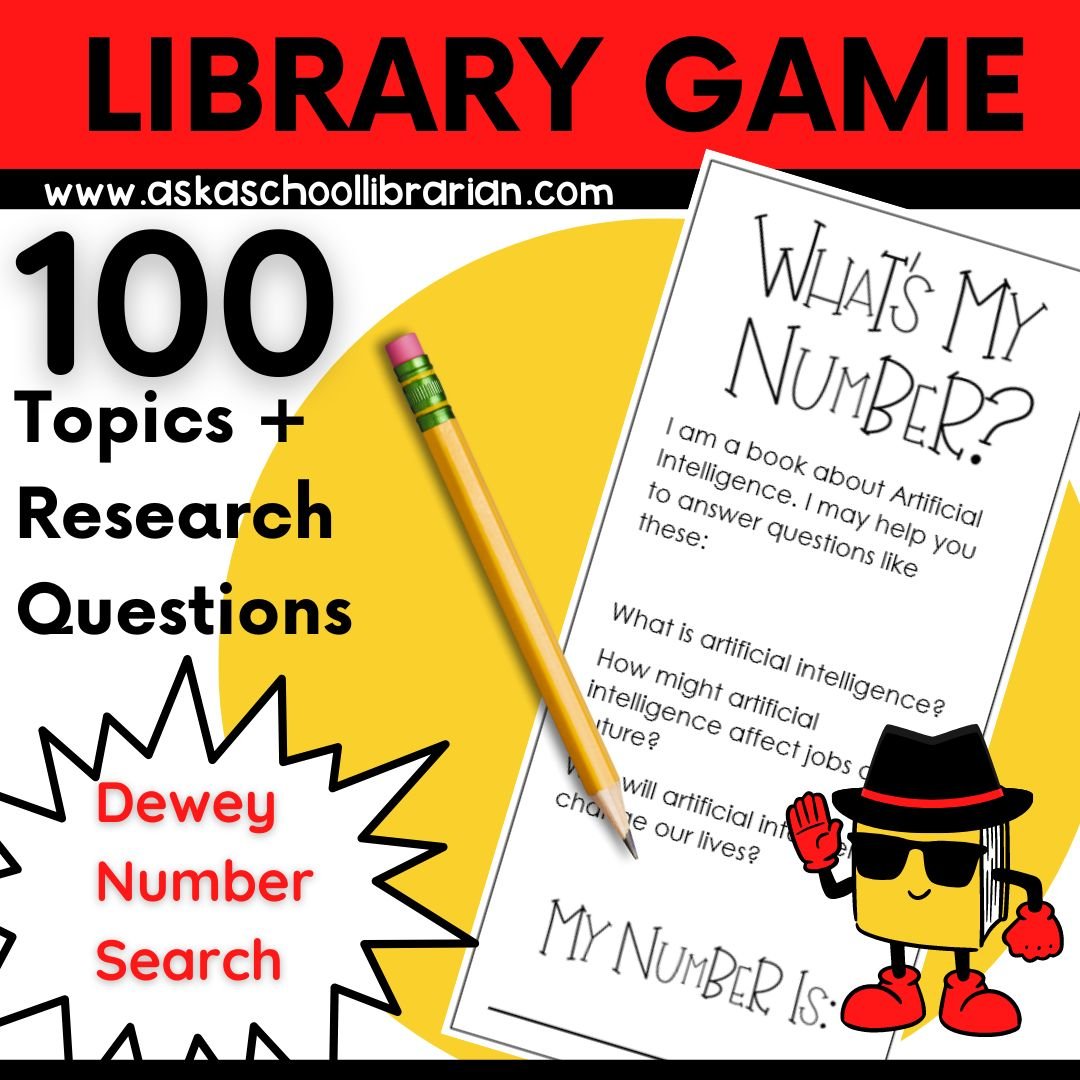How to Teach the Dewey Decimal System Without Boring Your Students
Let’s be honest—explaining the Dewey Decimal System can feel dry if it’s just a lecture. But this essential skill doesn’t have to be boring! With the right hands-on activities, games, and challenges, students can learn how to navigate the library while having fun.
Here’s how to make Dewey exciting, engaging, and unforgettable for your elementary students!
1. Turn Dewey Into a Treasure Hunt 🏴☠️
Transform your library into an adventure zone with a Dewey Decimal scavenger hunt!
How It Works:
Hide clues in different sections of the library.
Create a map where students must use Dewey numbers to find each clue.
The final clue leads to a “treasure”—a prize, a special book, or a fun library privilege!
💡 Example: “Find a book about planets. Look in the 520s!” 🌍🚀
📖 Recommended Resource:
Detective Booksy’s Library Scavenger Hunt – A ready-to-use scavenger hunt worksheet pack!
2. Make It a Team Relay Race 🏃♀️📚
A little competition can make learning more exciting!
How It Works:
Split students into teams.
Call out a Dewey Decimal category (e.g., "Find a book about dinosaurs – 560s!").
One student from each team races to find a book from that section.
First team to bring back the correct book earns a point!
✅ Why It Works: Gets students moving, thinking, and engaged!
📖 Recommended Resource:
Dewey Decimal System Pocket Guide – Portable guides to help students learn each Dewey section!
3. Play “Which Dewey?” 🤔
Teach students how to recognize Dewey Decimal categories.
How It Works:
Create flashcards with different Dewey numbers.
Hold up a card and have students explain what kind of books they would find in that section.
If they get it right, they earn points to use for prizes or special library privileges.
✅ Why It Works: Turns a boring number system into an interactive game!
📖 Recommended Resource:
Dewey Decimal Quiz and Flashcards – A set of Google Slides and printable Dewey classification cards for quick activities!
4. Play “What’s My Number?
Take library lessons to the next level with What’s My Number!
How It Works:
Students must solve riddles by reading clues about a book.
Clues are read from printable bookmarks—they must guess the book’s Dewey Decimal number!
💡 Example: “I am a book about artificial intelligence. What’s my number?” 🌋
📖 Recommended Resource:
What’s My Number? – A set of 100 printable riddles for students to learn the Dewey system and get inspired about research topics!
5. Act Out the Dewey Decimals 🎭
Turn Dewey categories into charades—a fun, movement-based way to remember them!
How It Works:
Give each student a Dewey Decimal category.
They must act out a book they’d find in that section while classmates guess.
Example: If they have 700s (Arts & Music), they can pretend to paint or play an instrument. 🎨🎻
✅ Why It Works: Helps visual and kinesthetic learners connect numbers to real topics!
📖 Recommended Resource:
Dewey Decimal Poster Set – Colorful visuals to help students remember categories!
Final Thoughts: Making Dewey Fun & Memorable!
By turning the Dewey Decimal System into a hands-on experience, students will learn faster, retain more, and actually enjoy it!
Looking for a ready-to-use, engaging Dewey activity pack? Check out Detective Booksy Mysteries – a printable library skills resource filled with fun detective-style cases to solve!
📚 What are your favorite ways to teach the Dewey Decimal System? Share your ideas below! 👇



